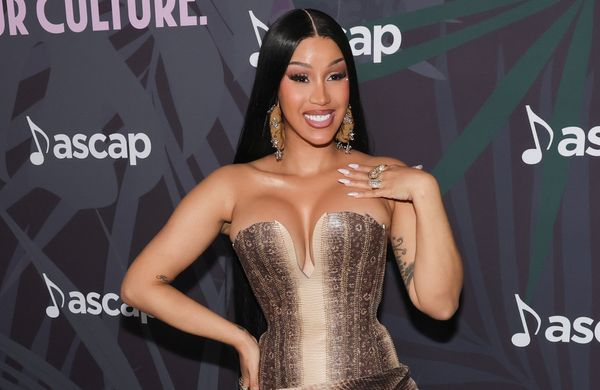Reality television has long captivated audiences by providing glimpses into lives vastly different from our own. Among the myriad of reality TV genres, shows focusing on morbidly obese individuals, such as 1000-Lb. Sisters and My 600-Lb. Life, has garnered significant attention. These programs delve into the daily struggles, health challenges, and personal relationships of individuals battling extreme obesity. But what drives the public’s fascination with these narratives? Let’s explore the factors contributing to the popularity of morbid obesity reality shows.
9 Reasons People Love Morbid Obesity Reality Shows

1. Voyeuristic Curiosity
Human nature often draws us to the unusual or extreme, and morbid obesity reality shows tap into this curiosity. Viewers are given an unfiltered look into the lives of individuals facing challenges that are both physically and emotionally taxing. This voyeuristic appeal allows audiences to witness personal moments, from daily routines to medical procedures, that are typically private. Such exposure can evoke a range of emotions, from empathy to shock. The intimate portrayal of these lives satisfies a desire to understand experiences vastly different from one’s own.
2. Emotional Storytelling
These shows often employ compelling narratives that highlight personal growth, setbacks, and triumphs. By focusing on individual stories, viewers become emotionally invested in the participants’ journeys. The portrayal of real-life struggles and successes fosters a connection between the audience and the individuals on screen. This emotional engagement keeps viewers returning, eager to see progress and outcomes. The storytelling approach humanizes the participants, making their experiences relatable despite the extremity of their situations.
3. Inspiration and Motivation
Witnessing the determination and resilience of individuals striving to overcome morbid obesity can be inspiring. These narratives often showcase significant weight loss achievements and lifestyle changes. Viewers may find motivation in these transformations, applying lessons learned to their own lives. The depiction of hard work leading to tangible results reinforces the idea that change is possible. Such inspirational content can have a positive impact on audiences seeking self-improvement.
4. Educational Insight
Morbid obesity reality shows provide educational content about the complexities of obesity, including its medical, psychological, and social aspects. Viewers gain awareness of the challenges faced by those with extreme obesity, such as mobility issues, health risks, and societal stigma. The programs often feature medical professionals who explain procedures and health conditions, enhancing the informative value. This educational component can foster empathy and understanding among viewers. By shedding light on these issues, the shows contribute to public discourse on health and wellness.
5. Controversy and Criticism
Despite their popularity, morbid obesity reality shows are not without controversy. Critics argue that these programs can exploit participants for entertainment, perpetuating stereotypes and reinforcing negative perceptions of obesity. The term “fattertainment” has been used to describe content that sensationalizes weight issues for viewer amusement. Such portrayals may contribute to societal stigma rather than promoting understanding. The ethical implications of broadcasting personal health struggles raise questions about the responsibility of content creators.
6. Social Media Amplification
The rise of social media has amplified the reach and impact of morbid obesity reality shows. Participants often gain substantial followings, sharing updates and engaging with fans online. This digital presence extends the narrative beyond television, allowing for real-time interaction and support. Social media platforms also facilitate discussions, fan theories, and community building around the shows. The online engagement contributes to sustained interest and viewership.
7. Reflection of Societal Issues
These reality shows mirror broader societal issues related to health, body image, and the healthcare system. They highlight the challenges individuals face in accessing medical care, the impact of socioeconomic factors on health, and the prevalence of weight-related discrimination. By bringing these topics to the forefront, the programs encourage conversations about public health and social support systems. The depiction of these issues can prompt viewers to consider the systemic factors contributing to obesity. This reflection can lead to increased awareness and advocacy for change.
8. Personal Identification
Some viewers may see aspects of themselves in the participants, fostering a sense of identification and empathy. This connection can be particularly strong for individuals who have faced similar struggles with weight, health, or self-esteem. The shared experiences depicted on screen validate personal challenges and emotions. This identification can be comforting and affirming, reinforcing the viewer’s engagement with the show. The relatability of the content strengthens the emotional bond between the audience and the participants.
9. The Appeal of Transformation
The transformation arc is a compelling element of morbid obesity reality shows. Audiences are drawn to stories of change, witnessing the journey from adversity to improvement. These narratives provide a sense of hope and the possibility of redemption. The visual and emotional aspects of transformation captivate viewers, offering a satisfying resolution. This appeal underscores the enduring popularity of such programs.
The Complex Fascination with Morbid Obesity Reality Shows
The popularity of morbid obesity reality shows stems from a combination of curiosity, emotional engagement, educational content, and the allure of transformation. While these programs can inspire and inform, they also raise ethical questions about representation and exploitation. As viewers, it’s essential to approach such content with critical awareness, recognizing the real-life implications for the individuals involved. Understanding the multifaceted appeal of these shows can lead to more thoughtful consumption and discussions about health, media, and society.
What are your thoughts on the portrayal of morbid obesity in reality TV? Share your perspectives in the comments below!
Read More
5 Reality Shows That Are Mostly Real
What Are The Fakest Reality Shows On TV Today?
The post ‘1000-Lb. Sisters’ & More: What is the Obsession Behind Reality Shows Following the Morbidly Obese? appeared first on Plunged in Debt.







